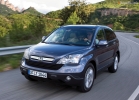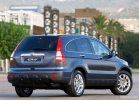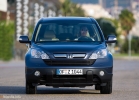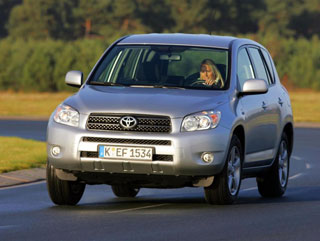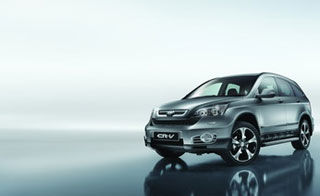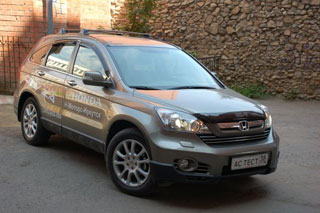Test drive Honda CR-V 2007-2009 SUV
Slavic cabinet
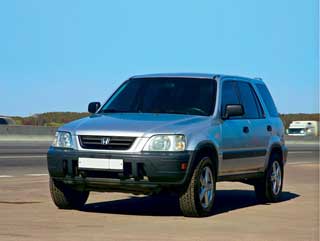 The first-generation CR-V Honda (factory indexes RD1 and RD2) were popularly dubbed by the abbreviation by sideboard. Pavel Leonov figured out the variety of furniture fittings. Photo: George Sadkov.
The first-generation CR-V Honda (factory indexes RD1 and RD2) were popularly dubbed by the abbreviation by sideboard. Pavel Leonov figured out the variety of furniture fittings. Photo: George Sadkov. The CR-V was first introduced in Japan in 1995, and a year later they organized their production for the domestic market. In Russia and Europe, these machines appeared only in 1997, and with the only 2-liter V-20V engine (128 hp), a 4-speed automatic gearbox and all-wheel drive with an automatically connected rear axle (factory designation RD1). Five -speed mechanics were proposed only in 1998. Despite the meager choice, the demand for these cars was huge, so their assembly was organized in different parts of the world of the United States, Canada, England and the Philippines. All -districts of the Japanese assembly were officially delivered to Russia, but in 2000 and 2001 the British were also imported. The place of birth can be recognized by VIN, more precisely by its first letters: JH speaks of Japanese origin, SH about English, 1HG and 2HG, respectively, about American and Canadian, and PAD about the Philippine. Additional information about a particular car can be gleaned from a special plate, which indicates the type of engine and chassis. In Europeans, she is attached to the left mudguard in the engine compartment, on the Americans it should be sought on the radiator frame.
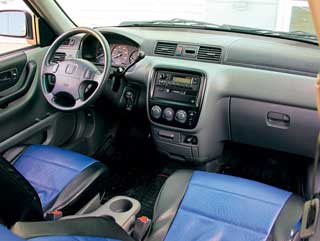 Ours and yours
Ours and yours CR-V, intended for the Russian and European markets, is almost identical to any Russian package. The difference is mainly reduced to the lack of air conditioning in some Europeans, while all the cars sold with us were equipped with him in the base. Moreover, the standard packages of the driver and the front passenger, a full electric package and the central castle, included standard equipment. For surcharge, it was possible to purchase alloy wheels, a hatch in the roof and relings.
Eurasian machines are easily distinguished from counterparts from other regions, without even looking at the identification numbers for the design of the back of the body. Thus, the license plate and the back of the background with the fog of the Europeans are located on the bumper, and the spare wheel hangs on the trunk door, while the number is attached directly to the fifth door for the markets for the markets of North America and Japan, the reversing signals are integrated into the lanterns on the rear racks , and the reserve can be inside the machine.
At the first years of release, black bumpers, mirrors and moldings were installed, which was very practical in the city crowd, but after the restyling of 1999 they began to be painted in the color of the body. In the front bumper there was a place of fog lights. The casing of the spurts began to be made of plastic (it used to be cloth), the front seats gained more developed side support, the backlight of the buttons and preferences of the seat belts appeared.
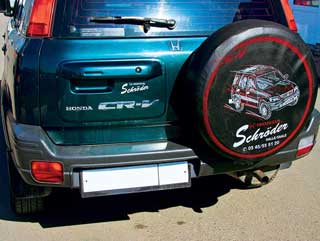 Then potential buyers were offered a new B20Z engine, which had already issued 147 hp. True, it can be considered new to it conditionally, since power growth has reached only changes in the intake and exhaust tracts.
Then potential buyers were offered a new B20Z engine, which had already issued 147 hp. True, it can be considered new to it conditionally, since power growth has reached only changes in the intake and exhaust tracts. CANNY
Cars sold in the US market had their own LX, Base, EX and SE (Special Edition) configurations. In addition to reflective elements in the front and rear bumpers, the shape of the light bundle, digitizing devices in miles and fahrenheites, shock absorbers and a reduced degree of engine compression (under the 92nd gasoline), these honda differed from analogues from other countries. So, cars in the simplest equipment of LX had both the full and front-wheel drive (factory index RD2) execution, stamped wheels and rather scarce interior decoration. Cars with a drive for one axis equipped only an automatic transmission, while the 4x4 version could be ordered with mechanics.
Base equipment was sold only in 1997. Unlike LX, all these cars had a 4WD and ABS drive. In a more advanced configuration, Et to everything else added alloy wheels and a central locking lock.
Well, the honda in the most charged version of the Special Edition was already flaunted by a leather salon, factory tinting and bumper -colored body (though not completely, but only in the upper part), moldings and mirrors. By the way, as an option for all configurations, they offered a tree decoration, a security alarm, etc.
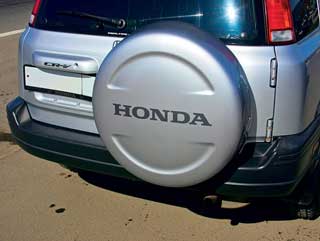 Simple and complex
Simple and complex In Japan, the first CR-V was released from October 1995 to August 2001, and despite the meager choice of engines (as well as all over the world, they offered only one type of engine before and after restyling) and transmission, there were more than ten options.
The simplest configurations of L Package and B Specification (even without air conditioning) were supplied with airbags and ABS only as options, although the drive to all wheels and the machine was required.
The more advanced Fullmark and Performma options appeared after restyling in 1998 and acquired pillows and ABS already in the base, and their versions with Navi prefix were even equipped with a navigation system. Fullmark holders could enjoy the decoration of a wood interior, and order a VSA system as a option that provides coordinated operation of ABS, 4WD, Slide Control and TCS (anti -circus system), while only TCS are satisfied with Performa (optionally). But the consolation of the latter was a body of increased rigidity and roof religions.
There are, but quite rarely, the Smart Scape and Active Scape configuration, which differ in additional stop symbols, the possible presence of the navigation system and the interior decoration.
Closer to the body
A huge number of cars are represented in the secondary market, among which brought from the USA and Japan prevail. Despite the similarity with European analogues, they have their own codes of many details, which will certainly lead to problems when ordering spare parts, since dealers do not have appropriate catalogs. In addition, the structure of the VIN of Japanese CR-V differs from the generally accepted, and this, in turn, does not allow the uninitiated even to determine the factory equipment of the car. It is better (albeit more expensive) to opt for Europeans or cars sold in Russia through official dealers.
Source: The magazine "Driving"
Honda CR-V 2007-2009 Crash Video tests
Honda CR-V 2007 test drives-2009
Honda CR-V 2007 Krash Test-2009
Krassh Test: Detailed Information33%
Driver and passengers
13%
Pedestrians
37%
Children-passengers


